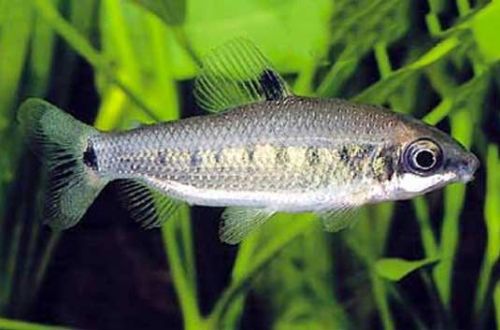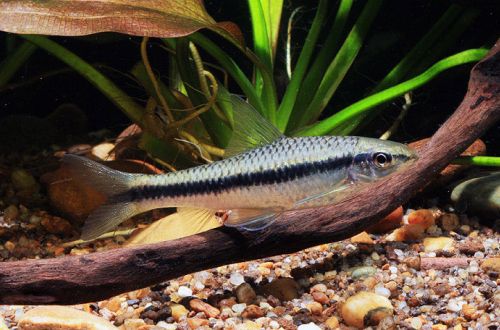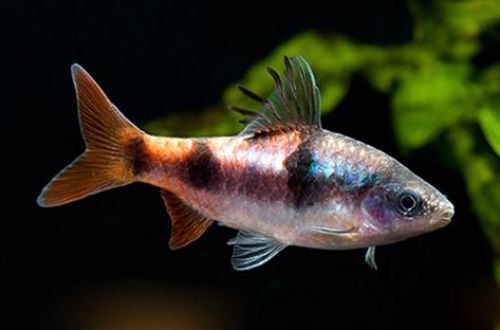
Ten-point distichodus
The ten-spotted distichodus, scientific name Distichodus decemmaculatus, belongs to the family Distichodontidae (Distichodontidae). The fish comes from the African continent. Found in the central basin of the Congo River. Inhabits numerous tributaries, prefers to be in places with calm water near the coastline among dense thickets of aquatic plants.

Description
In the wild, it rarely grows more than 7 cm in length, but in an aquarium it can become larger. The main color is gray or silver. As the name implies, a characteristic feature of the pattern is the presence of 10 dark spots located along the body. Another mark is located at the base of the dorsal fin.
Sexual dimorphism is weakly expressed. Males and females are almost identical to each other, but females may look somewhat larger.
Behavior and Compatibility
Peaceful flock look. It is necessary to maintain the size of the group from 8-10 individuals. They get along with other species of comparable size and temperament.
Brief information:
- The volume of the aquarium – from 150 liters.
- Temperature – 23-27°C
- Value pH — 6.5–7.5
- Water hardness – 5–20 dH
- Substrate type – any
- Lighting – subdued, moderate
- Brackish water – no
- Water movement is weak
- The size of the fish is about 7 cm.
- Nutrition – plant-based feed
- Temperament – peaceful
- Keeping in a group of 8-10 individuals
Maintenance and care, arrangement of the aquarium
The optimal size of the aquarium for a small flock starts from 150-200 liters. In the design, it is necessary to provide places for shelters made of natural (stones, driftwood) or artificial decorative elements. Since aquatic plants serve as the basis of the diet of the Ten-spotted distichodus, when decorating, it is worth giving preference to hard-leaved, unpretentious species, for example, vallisneria, anubias, Thai ferns and others.
The content is simple. The fish successfully adapts to life in various conditions and is able to adapt to a wide range of hydrochemical parameters. It is important to keep the pH and dGH values stable and avoid the accumulation of organic waste (feed leftovers, excrement).
Food
Although it belongs to herbivorous species, this fish cannot be considered a vegetarian. The diet should contain a small amount of protein. You can combine universal dry food with plant foods, or purchase specialized products made for fish with a similar nutritional feature.





